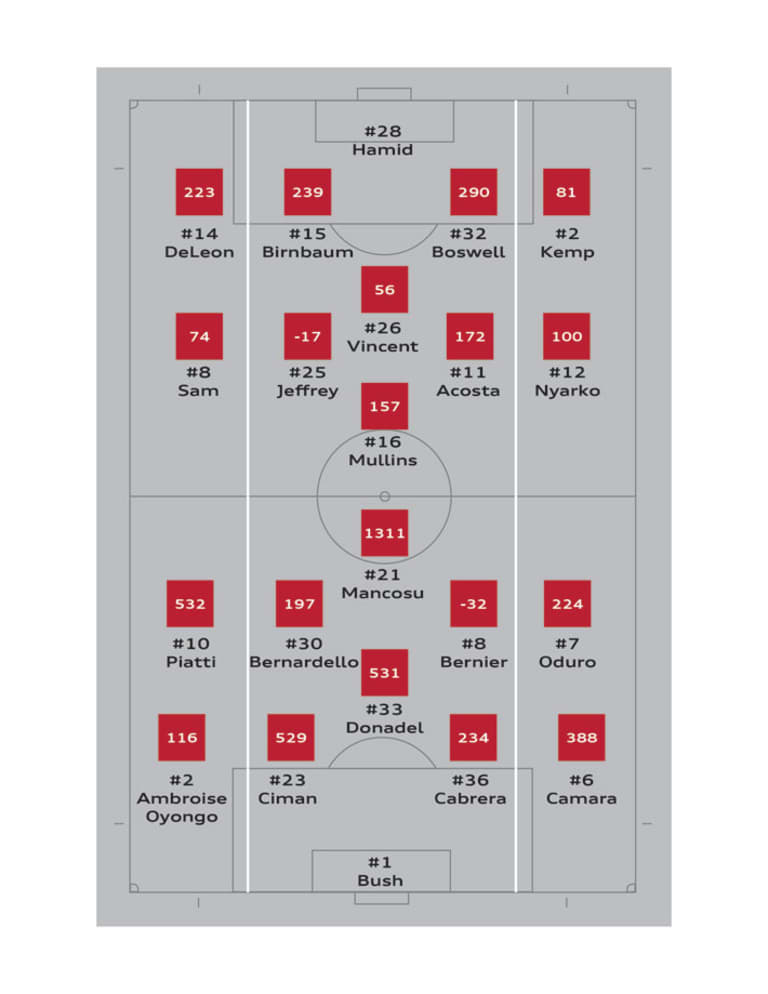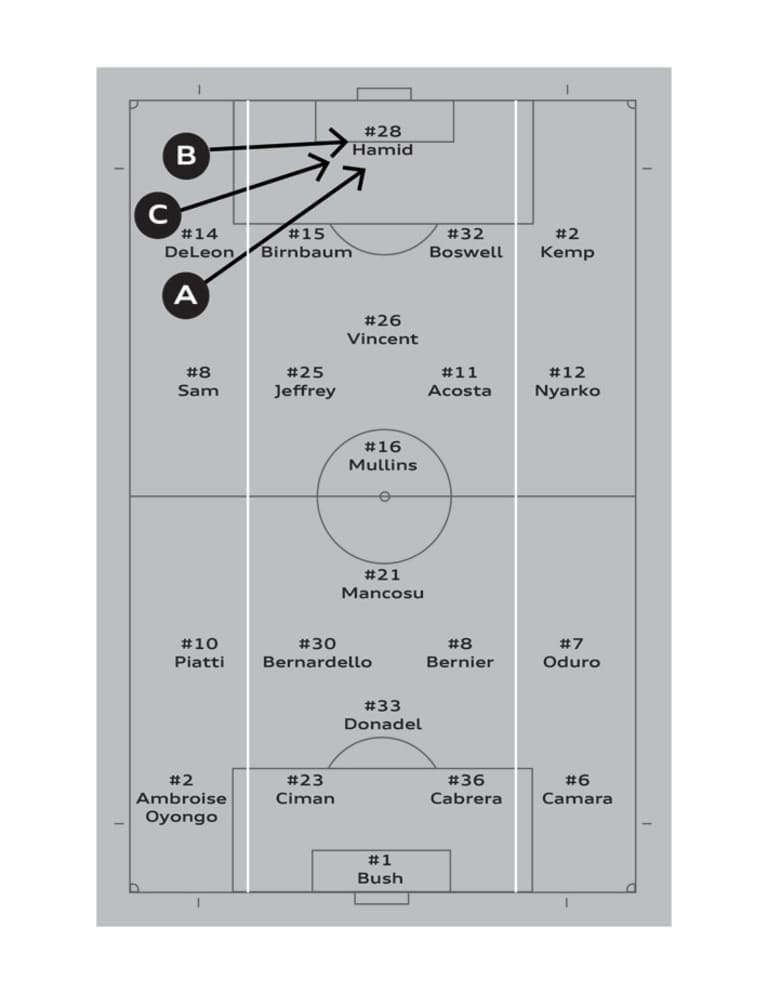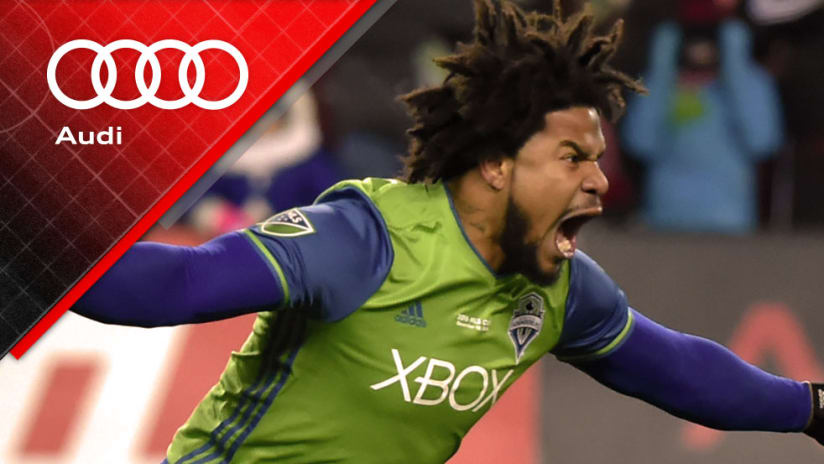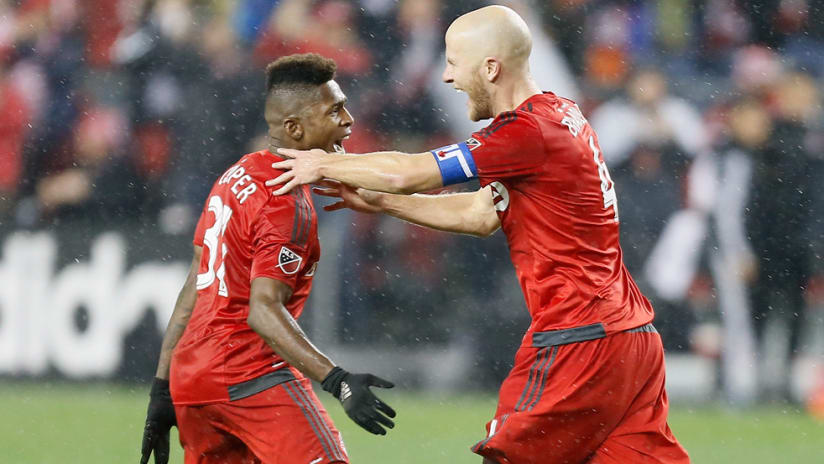We all wanted to know what a Didier Drogba-less Montreal team would look like in their do-or-die Audi 2016 MLS Cup Playoff match. Would they be lacking in team chemistry? Would they be missing something in the final third? Would they have to or even elect to defend more than attack?
The Impact squashed all doubts with a commanding performance against D.C. United. Though the game finished 4-2 after 90 minutes, it only took until the 58th for the Canadian side to hammer the final nails in the Black-and-Red’s coffin — as Matteo Manscosu effectively ended the game with a nifty header that put his team up three goals to nil.
It was not hard to recognize Montreal’s superior performance on this night at RFK Stadium through almost the first two thirds of the match. But, this is even more evident when consulting the Audi Player Index scores come the same 58-minute mark. Below is an image of the Audi Index Player scores for each team’s starters at this juncture of the game.

Now, there are countless ways to divide up the space on a soccer field. Often coaches and commentators will refer to the defensive, middle and attacking thirds. The same image above shows another way to examine on-pitch dynamics where the field is sliced into vertical thirds.
The middle vertical housed both teams’ center backs, three center midfielders and lone striker. And looking at the Audi Player Index scores in the image above through this central part of the field, there is no doubt the six Montreal players in these positions outclassed their six D.C. United counterparts.
Yet despite Montreal’s significantly better quality in this central channel, their play in these moments did not have as large an impact as one may be inclined to think. Yes, Montreal undeniably demonstrated they got the better of their opponents in that middle stripe. However, since numerous players were often involved in clashes in such areas, the play was often so crowded that not too much meaningful came out of those spaces.
With congestion from a total of 12 centrally-based players, the game was actually decided in the left vertical third. To be fair, there was no question that the Impact’s right midfielder (Dominic Oduro) and right back (Hassoun Camara) outplayed D.C.’s left midfield (Patrick Nyarko) and left back (Taylor Kemp). But all three Impact goals up until this time stemmed from their left side.
The build up to each goal is plotted below.

- A: The corner kick that gave the match its first goal was ultimately caused by a ball whipped in from left back Ambroise Oyongo that D.C. had trouble defending
- B: The Impact's second goal came from a great pass from Ignacio Piatti as he drifted in from the left side.
- C: Oyongo again delivered a great ball from the left that was headed home for the third goal.
It is hard to know how much of this organically unfolded or was by design. But having an elite player like Piatti out wide, where he could have a maximum impact on this game, was a crucial piece to Montreal’s success.
This all said, there is no way to escape the fact that aside from Victor Cabrera and Patrice Bernier, the Impact’s Audi Player Rankings had them better than D.C. United in all other 8 field positions. Given the totality of Montreal’s performance on this night, it should be exciting to see how they go about trying to reproduce it when they face the Red Bulls next.














